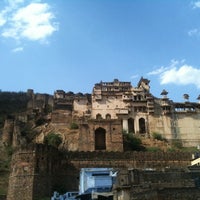See all Things to do in Bundi
Garh Palace
Sadar BaazarAbout
Bundi has one of the most magnificent histories that a region can have, and many wars and battles were fought here for over 600 years between Rajput clans, the Marathas and the British. Eventually it was Bundi which became the loser, not in terms of military losses but those of statesmanship. In 1264 it was deprived of the region which became Kota when Shah Jahan bestowed the area on the 14 year old Madho Singh . Then again in 1838 Bundi was forced to part with its land in the east when Zalim Singh, with a little help from the British, hewed another state out of Bundi – that of Jhalawar. With the advent of the second half of the 18th century there seemed to have been stability in the kingdom and a revival of art. It was now that Krishna and his consort Radha began to figure heavily in the Ragmala, surrounded by vegetation and animals. However, colour was the important aspect and form was secondary. In most paintings, figures are depicted as squat and a basic conformity is lacking. Also, Bundi painters had a habit of overcrowding their work, putting in as many things as they could within one painting. Like Kota, Bundi too encouraged the arts, especially painting. The most famous of the Bundi style is perhaps the Ragmala, a narrative portrayal in spectacular colour. However, the Ragmala gradually began to incorporate Mughal influences and eventually its Rajput originality took a back seat. During Akbar's reign in Delhi and that of Rao Chatar Sal in Bundi, Mughal influence became more apparent. This may have been due to the fact that Chatar Sal was very close to the Mughal emperor so much so that Akbar made him the governor of Agra. However, during the first half of the 18th century painting in Bundi seemed to have declined, probably because most of the time was spent in fighting wars.
